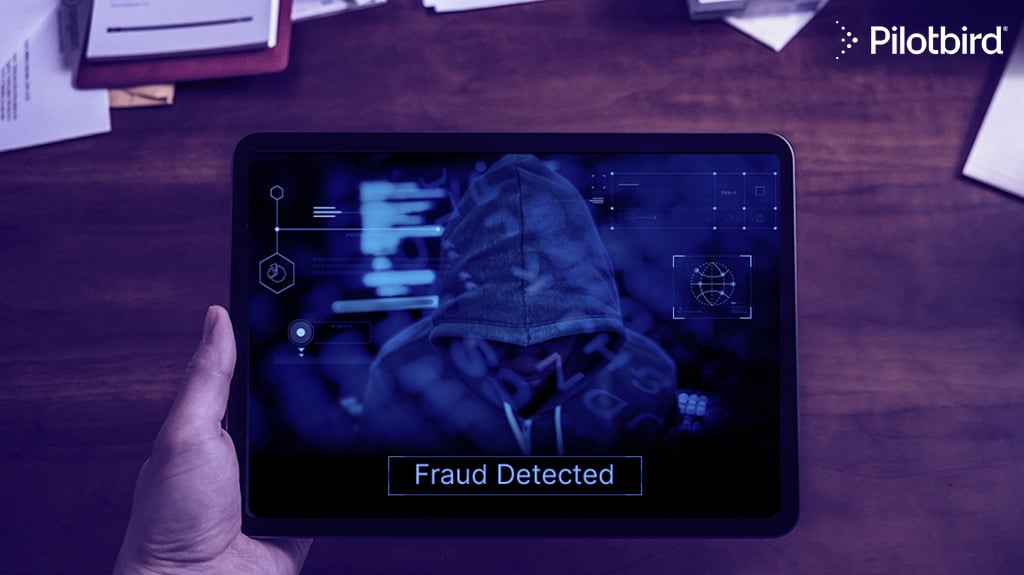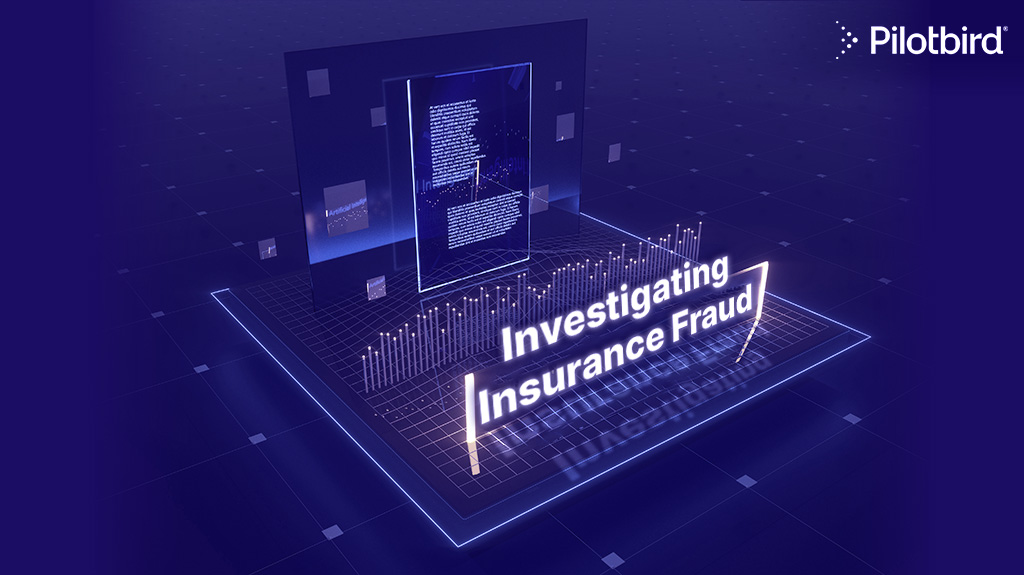Did you know insurance fraud costs the industry $308 billion annually? As fraudulent activities become more sophisticated, insurance companies use advanced technology solutions to combat this growing threat. Enter insurance fraud detection software – a powerful tool designed to identify and prevent fraudulent activities within the industry.
In this blog, we will explore the benefits and limitations of insurance fraud detection software, shedding light on its potential and providing insights into its effectiveness.
So, fasten your seatbelts as we journey to uncover the hidden truths of insurance fraud detection software. Discover how it can revolutionize the industry and the hurdles we must overcome to harness its potential truly. Are you ready to unravel the secrets behind insurance fraud detection software? Let's dive in!
What is Insurance Fraud Detection Software?
Fraud detection software is crucial in safeguarding the website from fraudulent activities. Its primary purpose is to monitor, investigate, and prevent fraudulent transactions conducted with stolen cards or identities. This software can be implemented at various stages of the user experience, from account creation to checkout, to identify and mitigate potential risks. A reliable fraud prevention platform typically encompasses the following framework:
Monitoring: Fraud detection tools offer comprehensive user data while visitors are on the website, providing valuable insights such as IP addresses and device information. This monitoring capability helps identify suspicious behavior and potential red flags.
Investigation: Data enrichment techniques can be employed to understand users and their associated risks better. Leveraging additional data sources can create a comprehensive profile of an individual's risk level. This information can then be used for manual review or automated processes to determine an overall risk score.
Blocking: Fraud detection software allows insurers to automatically permit or block user actions based on predefined risk rules. As enriched data reveals a higher likelihood of fraud, the software can trigger actions to mitigate risks, ensuring fraudulent activities are prevented.
Overview of the Fraud Detection Software Process
Insurance fraud detection software follows a comprehensive process to uncover potential fraudulent activities. It typically involves the following steps:
Data Collection
The software collects and integrates various data sources, including internal and external databases, policyholder information, claims history, and social media data.
Data Analysis
Sophisticated algorithms analyze the collected data, searching for patterns, trends, and anomalies that may indicate fraudulent behavior. This analysis includes identifying inconsistencies, suspicious claim patterns, and links between individuals or organizations involved in fraudulent activities.
Risk Scoring
Based on the analysis, the software assigns risk scores to claims or policyholders, indicating the likelihood of fraud. Higher-risk cases are flagged for further investigation.
Alert Generation
The software generates alerts for potential fraud cases, providing detailed information and supporting evidence to aid investigations.
Fraud Case Management
Insurance fraud detection software assists investigators by organizing and managing fraud cases and storing relevant documents, communication records, and investigation outcomes.

The Benefits of Insurance Fraud Detection Software
Insurance fraud detection software offers a range of benefits that empower insurance companies to combat fraudulent activities effectively. Let's delve into some key advantages:
Enhanced Fraud Detection
The software's advanced algorithms can analyze large volumes of data more effectively and efficiently than manual processes. This improves the detection of suspicious patterns and fraudulent activities, helping insurers prevent financial losses.
Increased Efficiency
Automation and machine learning capabilities reduce manual efforts, allowing insurers to process claims faster and allocate resources more efficiently. This leads to improved customer service and reduced operational costs.
Real-time Monitoring and Alerts
Fraud detection software monitors claim activities in real-time, providing immediate alerts for potential fraud cases. This enables insurers to take proactive measures and prevent fraudulent payouts.
Data-Driven Insights
Fraud detection software generates valuable data and analytics, providing insights into fraud trends, patterns, and emerging threats. These insights enable you to continually refine your fraud prevention strategies and stay one step ahead of fraudsters.
Cost Savings
Fraudulent insurance claims can result in substantial financial losses for insurance companies. By implementing fraud detection software, insurers can reduce these losses by preventing fraudulent payouts. Additionally, the software streamlines and automates the investigation process, saving time and reducing operational costs associated with manual reviews.
The Limitations of Data Analytics in Detecting Fraud
Data analytics has revolutionized the insurance industry, offering powerful tools to detect and prevent fraudulent activities. With the ability to analyze vast amounts of data and uncover patterns, data analytics has significantly enhanced fraud detection capabilities.
However, it is crucial to understand that data analytics is not a foolproof solution. Here we will explore the limitations of data analytics in detecting fraud and why it is essential to complement analytics with other strategies for robust fraud prevention.
Complex Insurance Fraud Schemes:
Fraudsters are skilled at devising intricate tactics like staged accidents, false documentation, and collusion networks to deceive insurers. Data analytics relies on historical data and predefined patterns, struggling to keep up with evolving fraud schemes. Identifying emerging fraud patterns requires a combination of human expertise and advanced analytics.
Lack of Contextual Understanding:
Data analytics analyzes patterns but often lacks contextual understanding. Fraudsters exploit this by disguising fraudulent activities as legitimate claims. Incorporating contextual information and expert judgment enhances fraud detection accuracy, as suspicious behavior and supporting documents are evaluated in a broader context.
Data Quality and Integration Challenges:
Data analytics effectiveness relies on the quality and integration of data from multiple sources. Data inaccuracies, missing information, and outdated records hinder analytics accuracy. Integrating data from disparate systems and external sources requires meticulous data cleansing and integration efforts.
Limited Insight into Intent and Motivation:
Data analytics identifies anomalies but falls short of understanding fraudsters' intent and motivation. Effective fraud prevention requires deeper analysis beyond data patterns. Factors like claim histories, suspicious behavior, and investigative techniques help uncover fraudulent intent and motivations.
How to Choose the Right Fraud Detection Software for Your Organization
As the digital landscape evolves, so does the complexity of insurance fraud. As a result, insurance fraud can significantly impact the profitability and reputation of an organization. As fraudsters become more sophisticated, insurance companies must invest in robust fraud detection software.
With numerous options available in the market, selecting the right software for your organization can be a daunting task. To help you make an informed decision, consider the following key factors when choosing insurance fraud detection software.
Comprehensiveness and Self-Learning Capability:
Fraudsters constantly evolve tactics, so your organization's fraud detection software must stay one step ahead. Look for software that offers comprehensive coverage across various fraud types, such as claims fraud, policy fraud, identity theft, and more.
The software should be capable of adapting to new fraud patterns and continuously learning from new data to enhance its detection capabilities. Self-learning algorithms can identify emerging fraud patterns and adjust detection rules accordingly, ensuring your organization remains protected against evolving threats.
Integration and Deployment:
When choosing fraud detection software, consider its compatibility with your organization's existing systems and infrastructure. For example, look for software that seamlessly integrates with your core insurance platforms, claims management systems, policy administration systems, and data warehouses.
A smooth integration process will facilitate efficient data sharing and ensure the software can access relevant information for accurate fraud detection. Additionally, consider the deployment options available—on-premises, cloud-based, or hybrid. Finally, select the deployment model that aligns with your organization's IT strategy and security requirements.
Compliance with Security Standards:
Given the sensitive nature of insurance data, security is paramount when selecting fraud detection software. Ensure the software complies with industry-standard security protocols and follows data protection regulations. Look for features such as data encryption, access controls, secure data storage, and regular security audits. Verify the software vendor's reputation and track record in maintaining high-security standards and protecting customer data.
Pilotbird: An Insurance Fraud Detection Company That Protects the Entire Customer Journey
Pilotbird is revolutionizing insurance fraud detection by safeguarding the entire customer journey. With cutting-edge technology and advanced algorithms, Pilotbird ensures comprehensive protection against fraud at every stage. From policy inception to claim settlement, their robust software analyzes data in real time, identifying potential fraudulent activities and minimizing risks.
Insurance companies can rest easy with Pilotbird, knowing their customers and businesses are protected. So say goodbye to fraud worries and embrace a secure future with Pilotbird—your trusted partner in the fight against insurance fraud. Discover further insights into our fraud monitoring by delving into our blog.
References
"12 Best Fraud Detection Software and Tools in 2023." SEON, 2023
https://seon.io/resources/comparisons/fraud-detection-and-prevention-software-tools/#:~:text=Fraud%20detection%20software%20is%20designed,with%20stolen%20cards%20or%20identities.
"News & Events." Conroy Simberg, 2023
https://www.conroysimberg.com/blog/insurance-fraud-costs-the-u-s-308-billion-annually/#:~:text=The%20Coalition%20Against%20Insurance%20Fraud,insurance%20fraud%20has%20been%20updated.
"8 benefits of insurance fraud analytics." PropertyCasualty360, 2021
https://www.propertycasualty360.com/2021/11/22/8-benefits-of-insurance-fraud-analytics/
"Fraud Detection in Insurance Claim Process by Using Artificial Intelligence." Cigniti, 2022
https://www.cigniti.com/blog/fraud-detection-insurance-claim-process-artificial-intelligence/





Leave a Comment
Your email address will not be published. Required fields are marked *